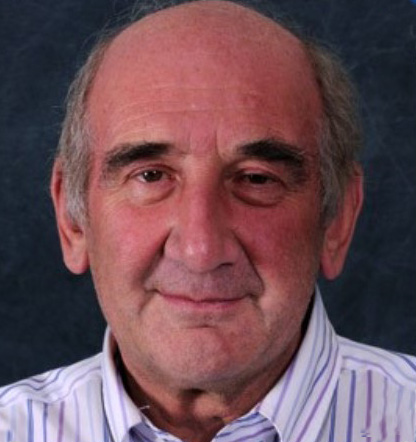Understanding asthma and chronic obstructive pulmonary disease by Professor Peter Barnes MAE#
Professor Peter Barnes MAE tells us about his career highlights and the effect of COVID-19 on his research.
About Peter Barnes#
Peter Barnes is Professor of Medicine at the National Heart and Lung Institute and Honorary Consultant Physician at Royal Brompton Hospital
and Honorary Consultant Physician at Royal Brompton Hospital , London. He has worked as a respiratory scientist for over 40 years and was Head of Respiratory Medicine at Imperial College
, London. He has worked as a respiratory scientist for over 40 years and was Head of Respiratory Medicine at Imperial College from 1987 to 2017. He has been the most highly cited respiratory researcher in the world over the last 30 years (h-index = 185) and recently ranked as 4th most highly cited researcher in the world across all areas. He is a Fellow of the Royal Society
from 1987 to 2017. He has been the most highly cited respiratory researcher in the world over the last 30 years (h-index = 185) and recently ranked as 4th most highly cited researcher in the world across all areas. He is a Fellow of the Royal Society and the Academy of Medical Sciences
and the Academy of Medical Sciences . He was elected a Member of Academia Europaea in 2012.
. He was elected a Member of Academia Europaea in 2012.
The interview#
Professor Barnes, how did you first become interested in studying respiratory diseases? in London looking at the pharmacology of asthma. I had enjoyed respiratory medicine as a junior doctor as it was closer to general medicine than most specialties. My reservations about doing research were rapidly dispersed and I became fascinated in my research project on the neural and hormonal control of the airways in asthma, particularly as I had suffered from mild asthma as a child. I worked in the renowned Department of Clinical Pharmacology at the Royal Postgraduate Medical School, led by Professor Sir Colin Dollery and I was very fortunate to have an excellent mentor in Professor Neil Pride
in London looking at the pharmacology of asthma. I had enjoyed respiratory medicine as a junior doctor as it was closer to general medicine than most specialties. My reservations about doing research were rapidly dispersed and I became fascinated in my research project on the neural and hormonal control of the airways in asthma, particularly as I had suffered from mild asthma as a child. I worked in the renowned Department of Clinical Pharmacology at the Royal Postgraduate Medical School, led by Professor Sir Colin Dollery and I was very fortunate to have an excellent mentor in Professor Neil Pride who was a world expert in respiratory physiology and an inspirational researcher. I have found research in respiratory medicine to be fascinating, as there are so many unanswered questions in common complex diseases, such as asthma and COPD, which have been my main areas of research.”
who was a world expert in respiratory physiology and an inspirational researcher. I have found research in respiratory medicine to be fascinating, as there are so many unanswered questions in common complex diseases, such as asthma and COPD, which have been my main areas of research.”
As an international leader in diseases like asthma and COPD, can you give us the highlights of your research findings?
Elucidating this mechanism led to an understanding of why some patients with severe asthma and patients with COPD fail to respond effectively to steroids. This led to the discovery of new drugs are able to reverse steroid-resistance.
One area of research that has now become useful in clinical practice is the finding that nitric oxide (NO) gas levels are elevated in the breath of asthmatic patients as a result of eosinophilic inflammation and that this is reduced by inhaled steroids. Measuring NO in breath has not become a routine test for measuring inflammation in asthmatic airways and monitoring the effects of treatments.
More recently I have focused understanding inflammatory mechanisms in COPD as there are no effective anti-inflammatory treatments to reduce progression of this common disease. We have found that cellular senescence in COPD as a result of accelerated lung ageing causes the release of inflammatory mediators and elucidating the molecular pathways of cellular senescence has identified several novel targets for therapy that we are now exploring, Since these same pathways are seen in common comorbidities of COPD (such as cardiovascular disease) and may spread form the lung by extracellular vesicles, it is possible that a single therapeutic intervention may not only stop COPD progression, but also treat associated comorbid diseases. This is a very exciting prospect that may revolutionize the management of mutimorbidity of the elderly in the future.”
Can you tell us how your research has translated into better treatments for patients suffering from these debilitating diseases?
How is the COVID-19 pandemic impacting your research? What challenges do you have to overcome and which opportunities can you see?
 .
.For further information please contact AECardiffHub@cardiff.ac.uk
 .
.


